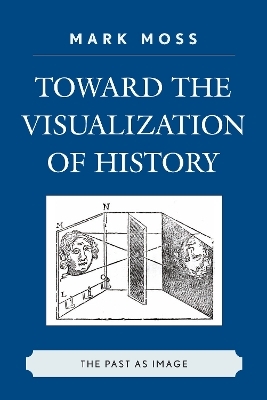
Toward the Visualization of History
The Past as Image
Seiten
2008
Lexington Books (Verlag)
978-0-7391-2437-6 (ISBN)
Lexington Books (Verlag)
978-0-7391-2437-6 (ISBN)
This book discusses the impact of visuals on the study of history by examining visual culture and the future of print, providing an analysis of photography, film, television, and computer culture. The author shows how the visualization of history can become a driving social and cultural force for change.
Over the past 50 years, the influence of visuals has impacted society with greater frequency. No subject is immune from the power of visual culture, and this fact becomes especially pronounced with regards to history and historical discourse. Where once the study of the past was books and printed articles, the environment has changed and students now enter the lecture hall with a sense of history that has been gleaned from television, film, photography, and other new media. They come to understand history based on what they have seen and heard, not what they have read. What are the implications of this process, this visualization of history? Mark Moss discusses the impact of visuals on the study of history with an examination of visual culture and the future of print. Recognizing the visual bias of the younger generations and using this as a starting point for teaching history is a critical component for reaching students. By providing an analysis of photography, film, television, and computer culture, Moss uses the Holocaust as an historical case study to illustrate the ways in which visual culture can be used to bring about an awareness of history, as well as the potential for visual culture becoming a driving force for social and cultural change.
Over the past 50 years, the influence of visuals has impacted society with greater frequency. No subject is immune from the power of visual culture, and this fact becomes especially pronounced with regards to history and historical discourse. Where once the study of the past was books and printed articles, the environment has changed and students now enter the lecture hall with a sense of history that has been gleaned from television, film, photography, and other new media. They come to understand history based on what they have seen and heard, not what they have read. What are the implications of this process, this visualization of history? Mark Moss discusses the impact of visuals on the study of history with an examination of visual culture and the future of print. Recognizing the visual bias of the younger generations and using this as a starting point for teaching history is a critical component for reaching students. By providing an analysis of photography, film, television, and computer culture, Moss uses the Holocaust as an historical case study to illustrate the ways in which visual culture can be used to bring about an awareness of history, as well as the potential for visual culture becoming a driving force for social and cultural change.
Mark Moss is chair of general arts and science in the Faculty of Business at Seneca College in Toronto, Ontario.
Chapter 1 Table of Contents Chapter 2 Preface Chapter 3 Introduction Chapter 4 1 Visual Culture and Historical Consciousness Chapter 5 2 Media, Memory, and History Chapter 6 3 The Future and Past of Print Culture Chapter 7 4 Photographing History Chapter 8 5 Visions of the Past: Film and History Chapter 9 6 Televising History Chapter 10 7 The Process of Holocaust Commemoration in the Media Age Chapter 11 8 Computer Technology and History Chapter 12 Conclusions Chapter 13 Bibliography Chapter 14 Index
| Erscheint lt. Verlag | 19.6.2008 |
|---|---|
| Verlagsort | Lanham, MD |
| Sprache | englisch |
| Maße | 163 x 240 mm |
| Gewicht | 578 g |
| Themenwelt | Geisteswissenschaften ► Geschichte ► Allgemeine Geschichte |
| Geisteswissenschaften ► Geschichte ► Geschichtstheorie / Historik | |
| Geisteswissenschaften ► Sprach- / Literaturwissenschaft ► Anglistik / Amerikanistik | |
| Geisteswissenschaften ► Sprach- / Literaturwissenschaft ► Literaturwissenschaft | |
| Sozialwissenschaften ► Kommunikation / Medien ► Medienwissenschaft | |
| ISBN-10 | 0-7391-2437-4 / 0739124374 |
| ISBN-13 | 978-0-7391-2437-6 / 9780739124376 |
| Zustand | Neuware |
| Haben Sie eine Frage zum Produkt? |
Mehr entdecken
aus dem Bereich
aus dem Bereich
eine Familiengeschichte der Menschheit
Buch | Hardcover (2023)
Klett-Cotta (Verlag)
CHF 68,60
Eine wahre Geschichte von Schiffbruch, Mord und Meuterei
Buch | Hardcover (2024)
C.Bertelsmann (Verlag)
CHF 34,95


